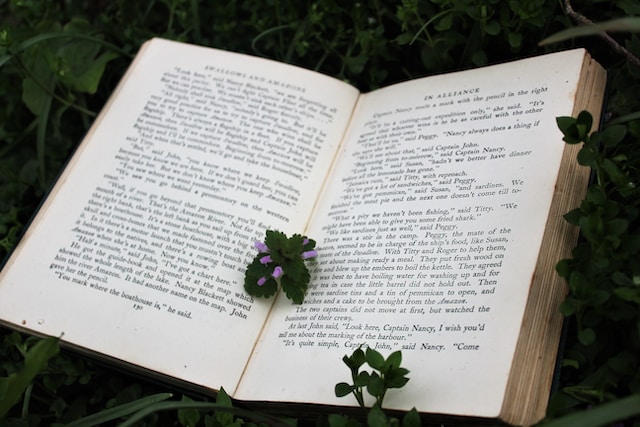The beauty and power of nature have been a source of inspiration for writers throughout history. From Thoreau’s Walden to Annie Dillard’s Pilgrim at Tinker Creek, the natural world has provided endless material for literary exploration. In contemporary writing, this tradition continues as authors seek to capture the essence of America’s landscape in their work. In this blog post, we’ll explore why nature is such a vital element in modern literature and provide tips on how to effectively write about it. So grab your hiking boots and let’s venture into the wild world of nature writing!
Why nature is important to contemporary writers
Nature is a vital element in contemporary writing because it connects us to our roots and reminds us of the beauty and power of the natural world. In today’s fast-paced, technology-driven society, we often forget about the importance of nature in our lives.
But for writers, nature provides an endless source of inspiration. Whether it’s a peaceful forest or a raging river, the natural world has a way of stirring emotions and sparking creativity. By incorporating elements of nature into their work, writers can create powerful imagery that resonates with readers on a deep level.
Furthermore, writing about nature allows authors to explore themes such as conservationism, environmentalism, and spirituality. These are important issues that affect us all and by bringing them to light through literature; writers have the potential to inspire change and raise awareness about pressing concerns.
In addition to serving as inspiration for literary works; many contemporary writers view nature as an essential component of life itself. They see spending time outdoors as a means to escape from everyday stresses and connect with something larger than themselves. This connection not only inspires their writing but also helps them maintain balance in their personal lives.
All in all; whether viewed as inspiration or essential component for life; there is no denying that contemporary writers recognize how important nature is when it comes to creating meaningful works that resonate with readers far beyond just words on paper.
How to capture the essence of America’s landscape
Capturing the essence of America’s landscape is no easy feat, but with the right approach and mindset, it can be done. The first step in capturing the essence of any landscape is to immerse yourself in it. Spend time exploring the area, taking note of its unique features and characteristics.
To truly capture the essence of America’s vast and diverse landscapes, one must pay attention to detail. Notice how light falls on a particular tree or how shadows are cast across a mountainside. Take note of sounds like birds chirping or water flowing.
Another important aspect is to understand the history behind each location you visit. Researching historical and cultural landmarks can help you establish connections between people and places that have shaped it as we know it today.
When writing about nature, using descriptive language can make all the difference. Rather than saying “I saw trees,” try describing them as “towering giants that reached towards the sky.” This will help your readers envision what you’re seeing more vividly.
When capturing America’s landscape through writing or photography, remember that every angle offers something different; don’t be afraid to experiment with different perspectives!
Tips for writing about nature
Writing about nature is an excellent way to capture the essence of America’s landscape. However, it can be challenging to find the right words and phrases to describe the beauty and complexity of nature. Here are some tips for writing about nature that will help you capture its essence.
1. Observe closely
Before you start writing, take a moment to observe your surroundings carefully. Look at every detail: the colors, textures, sounds, smells – everything that makes up the environment you’re in.
2. Use sensory language
Use descriptive language that appeals to all five senses: sight, hearing, touch, smell and taste. This type of description will help readers feel like they are experiencing nature themselves.
3. Avoid cliches
Avoid using overused or cliche expressions such as “as pretty as a picture” or “green as grass.” Instead try using unique descriptions that resonate with your audience.
4. Show don’t tell
Rather than telling readers what they should feel or experience when reading your work; show them through vivid imagery and sensory details how beautiful or awe-inspiring nature can be.
5. Find inspiration in literature
Read books by other authors who have written about nature before you begin writing yourself— this will inspire new ways of describing natural settings effectively while enhancing your own creative style!
Incorporating these tips into your writing process can make it much easier to convey both the majesty and fragility of our natural world accurately!
Conclusion
Nature is a vital element in contemporary writing as it allows writers to capture the essence of America’s landscape and imbue their work with a sense of place. Whether you are describing sweeping vistas or intimate details about flora and fauna, nature can add depth and richness to your writing. By following these tips for writing about nature, such as using sensory language and avoiding cliches, you can create vivid images that transport readers into the heart of the natural world.
So if you’re a writer looking to infuse your work with the beauty of the outdoors, take some time to explore America’s landscapes firsthand. Whether it’s hiking through national parks or taking long walks through city gardens, there are countless opportunities to connect with nature on a deeper level. And who knows? You may just find yourself inspired by what you see – ready to capture its essence in words that will touch readers’ hearts for years to come.











